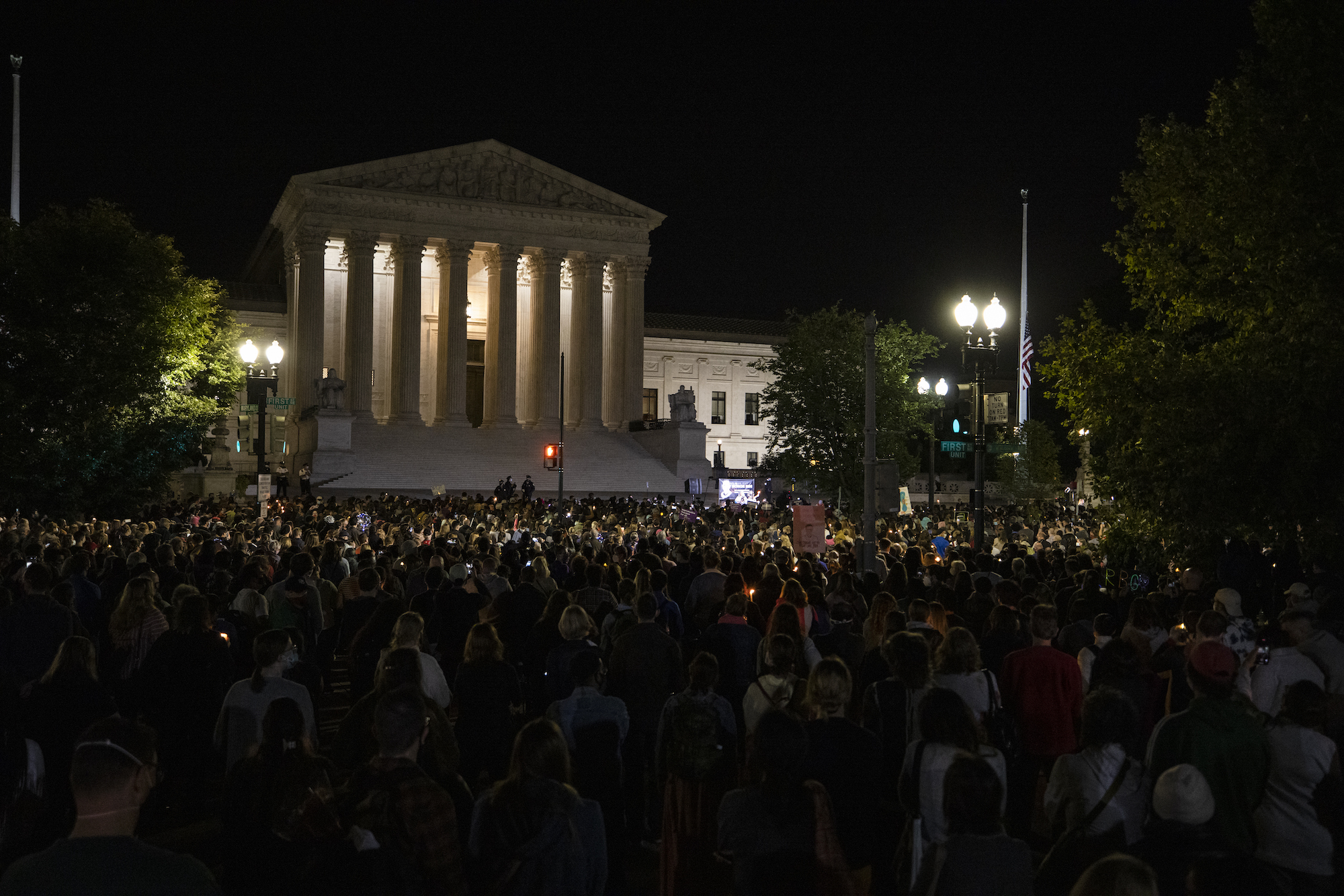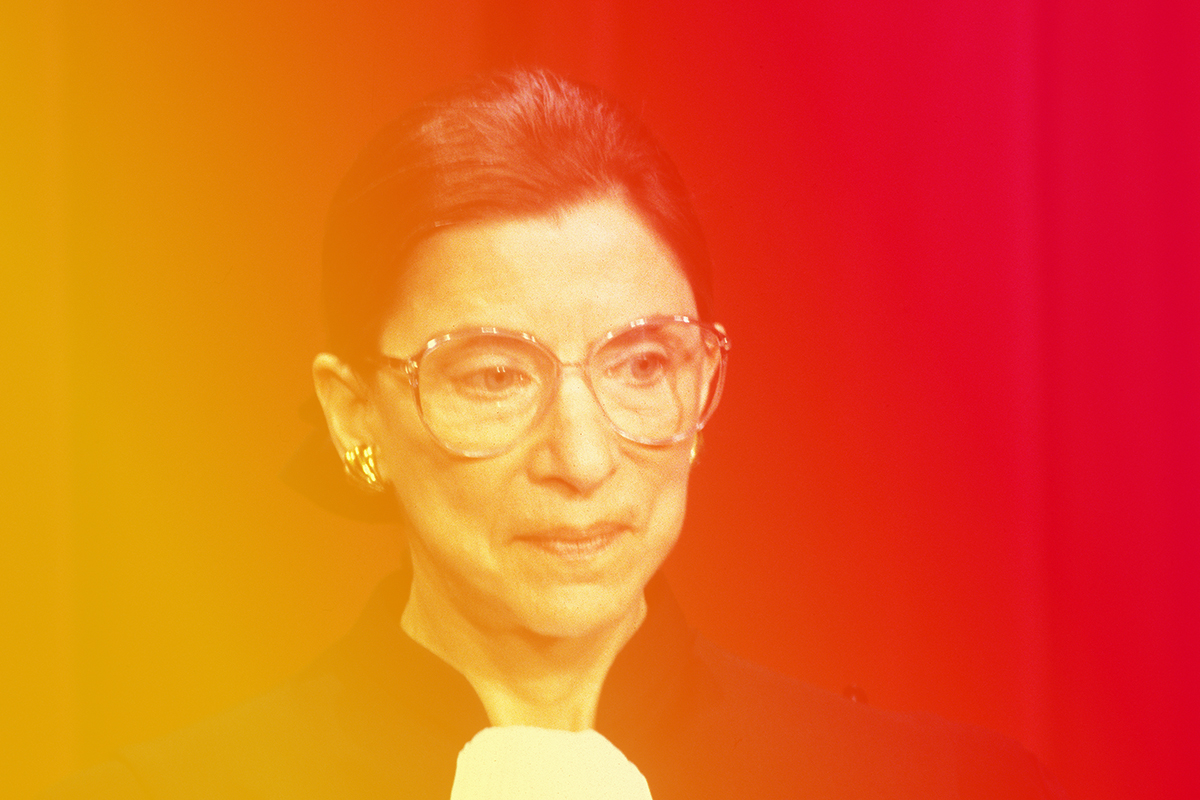In late summer 2018, I needed strength, so I ordered a pair of earrings online. I was entering my senior year of college, wrapping up a formative internship, and anticipating my reproductive rights being stripped away after Donald Trump named anti-choice Republican Brett Kavanaugh as his nominee to the Supreme Court, the highest bench in the nation for a lifetime seat. Those earrings were tiny facsimiles of Ruth Bader Ginsburg’s infamous “dissent collar,” the item of clothing she wore over her black robes when offering her notorious dissenting opinions to the Court.
Almost a dozen of my friends and family sent me the link to those earrings. They knew that RBG was a life-long inspiration to me as an activist for reproductive freedom and abortion access. I bought those earrings and I wore them for the first time when I participated in an act of civil disobedience that lead to my arrest during the first day of Kavanaugh’s senate confirmation. I needed Ruth’s strength then. I needed to be reminded that dissenting can be unpopular, even dangerous, but necessary.
I’ve worn those earrings to almost every single protest, rally, and march since that day. I wore them when I spoke to a crowd of a thousand people in front of the Supreme Court. I wore them when I walked across the stage at my graduation. I’ve worn them while escorting patients at abortion clinics. And I wore them again when I once again stood at the Supreme Court this past Friday night, listening to the shofar being blown in Ruth’s honor on the first night of Rosh Hashanah.
That day had been chaos. I learned my childhood cat had been put down and my girlfriend, Hannah Ruth, and I had spent the better part of the afternoon bailing black smelly water from our sink that kept filling up. We missed a communal (and socially distanced) shofar blowing due to plumbers and maintenance coming in and out of our apartment. When it came time to finally sit down at our beautiful table we had lovingly decorated together and stream services, we were hoping we could have the evening to be present, grounded, and grateful for Rosh Hashanah, the Jewish New Year.
In the middle of my rabbi’s sermon, I received a notification on my phone. I couldn’t even wait to open it and verify whether or not it was just another hoax before bursting into tears. Something told me in the pit of my stomach it was true. Hannah Ruth and I then watched in tears as my rabbi cried and eulogized Ruth Bader Ginsburg in real time before we all stood for the Mourner’s Kaddish.
I’ve been an activist for almost five years now, fighting for abortion access. As a queer, Jewish woman, I am almost always questioned for this. How can I identify as a person of faith when it’s almost exclusively people of faith trying to strip away our legal right to abortion? What many people don’t know is that Judaism’s central message is to do justice, to treat others with the utmost kindness, and to make this world a more equitable place.
But Ruth knew that. In 2004, she gave a speech at the US Holocaust Memorial Museum, saying, “My heritage as a Jew and my occupation as a judge fit together symmetrically. The demand for justice runs through the entirety of Jewish history and Jewish tradition. I take pride in and draw strength from my heritage, as signs in my chambers attest…the command from Deuteronomy: ‘tzedek, tzedek, tirdoff’ — ‘Justice, justice shall you pursue.’ Those words are ever-present reminders of what judges must do that they ‘may thrive.’”
As RBG’s biographer Jane Sherron De Hart explained to Alma, “I think that [tikkun olam, healing the world] was very much emphasized by her mother and I think it made particular sense for a child growing up in the depression, in World War II, learning about the Holocaust, and the huge need for repair after the atrocities of the war and the Holocaust. I think [Celia] emphasized the sense of social justice that is very often a part of Judaism.”
Ruth, driven by her Jewish values, is the reason that women like me can obtain birth control without permission from a husband. Open a checking account without a male cosigner. Find and keep a job without being discriminated against because of my gender, and so much more.

When we headed to the Supreme Court later that evening I didn’t know what to expect. What I found was beyond touching: thousands of people were already there and more joined throughout the evening. People brought rocks, candles, flowers, and so many signs thanking Justice Ginsburg for her lifetime of service. A group of young women recited the Mourner’s Kaddish together, and later in the evening, someone even blew a shofar. I’ve spent years protesting at the Supreme Court and never could have imagined hearing a shofar blow in reverence and remembrance.
Watching Ruth Bader Ginsburg persevere through loss, illness, and the rapid deterioration of our democracy has time and time again given me the strength to do the holy work of activism. She gave it her all to her dying day. Now it’s time for me — and the millions of other young women who she’s inspired — to carry on the torch of justice. And rock dissent earrings, too.
May her memory be a revolution.
Header image by Ron Sachs/CNP/Getty Images.



